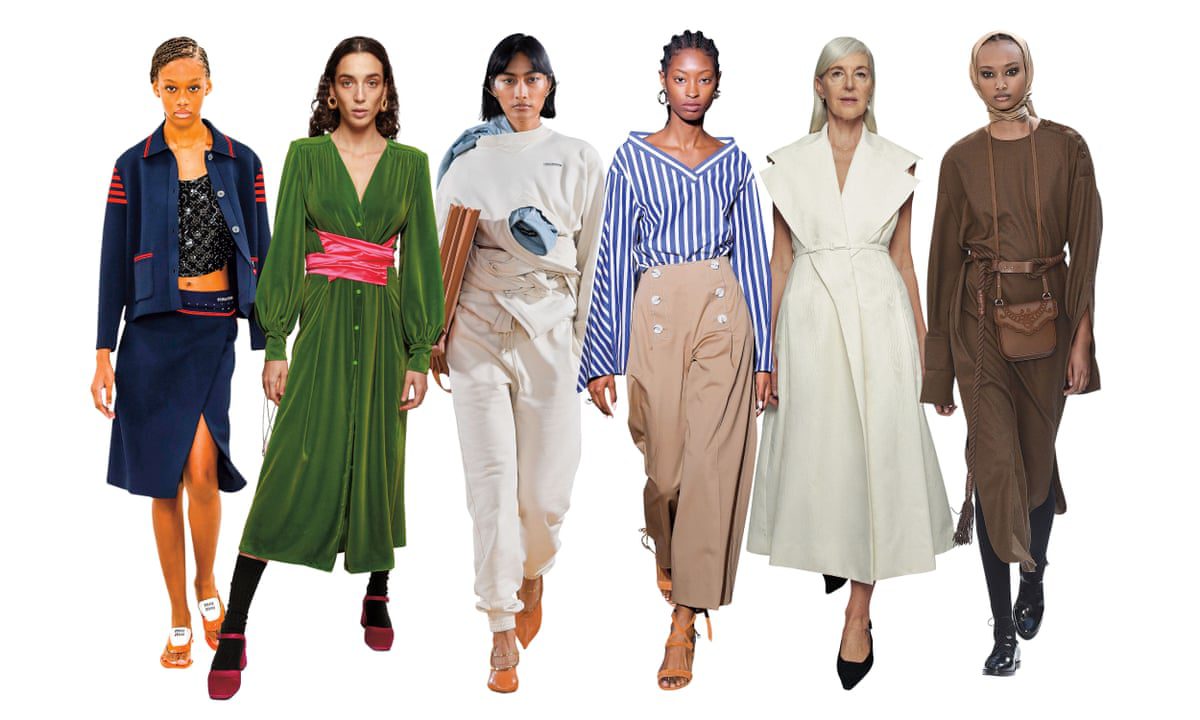This content discusses the differences between vintage and modern fashion trends. Vintage fashion refers to clothing from the 1920s to 1980s known for its craftsmanship and nostalgic appeal, while modern fashion embraces the latest trends and technologies. Vintage fashion often uses natural fabrics like silk and wool, while modern fashion incorporates synthetic materials like polyester. Vintage fashion features unique patterns and designs inspired by specific eras, while modern fashion embraces minimalism and clean lines. Vintage fashion emphasizes curves and tailored fits, while modern fashion promotes comfort and freedom of movement. Accessories in vintage fashion are prominent and statement-making, while modern fashion focuses on minimalistic accessories that complement the overall aesthetic. Both vintage and modern fashion allow for self-expression and experimentation.
Introduction
Fashion trends have always evolved over time, with some styles making a triumphant return while others fade into oblivion. However, there are certain fashion trends that manage to withstand the test of time, capturing the essence of different eras. When it comes to fashion, two contrasting styles often come to the forefront: vintage and modern. In this article, we will explore the nuances of these timeless fashion trends, comparing and contrasting them to uncover their unique characteristics.
Vintage Fashion: A Glimpse into the Past
Vintage fashion refers to clothing and accessories that were created between the 1920s and 1980s. These pieces are revered for their craftsmanship, intricate details, and nostalgic appeal. As time passes, these clothing items gain sentimental value and become coveted collectibles.
Modern Fashion: Embracing the Contemporary
While vintage fashion pays homage to the past, modern fashion is all about pushing boundaries and embracing the contemporary. It encompasses the latest trends, styles, fabrics, and technologies, evolving rapidly in tandem with ever-changing societal norms and preferences.
Fabric and Materials
One of the key distinctions between vintage and modern fashion lies in the choice of fabrics and materials. Vintage fashion often includes natural fabrics like silk, cotton, and wool, known for their durability, breathability, and timeless appeal. In contrast, modern fashion frequently incorporates synthetic materials such as polyester and spandex, offering stretchability, wrinkle resistance, and ease of care.
Patterns and Designs
Vintage fashion is characterized by its unique patterns and designs, often inspired by specific eras. From the bold geometric prints of the 1960s to the feminine floral motifs of the 1950s, vintage garments exhibit a wide spectrum of styles. In contrast, modern fashion embraces minimalism, favoring clean lines, monochromatic palettes, and subtle patterns. Contemporary designs often focus on timeless elegance and versatility.
Silhouettes and Fits
Another notable difference between vintage and modern fashion pertains to their silhouettes and fits. Vintage clothing celebrates the hourglass figure, accentuating the waistline and emphasizing curves. It often involves tailored garments, corsets, and cinched silhouettes. Modern fashion, on the other hand, embraces a variety of body shapes and promotes comfort and freedom of movement. Loose-fitting clothes, oversized silhouettes, and athleisure wear have gained popularity in recent years.
Accessories
Accessories are integral to both vintage and modern fashion, but they vary in style and prominence. Vintage fashion relies heavily on accessories like hats, gloves, brooches, and scarves to complete a look. These accessories serve as statement pieces and play a significant role in defining an outfit. In contrast, modern fashion tends to focus more on minimalistic accessories, such as delicate jewelry, sunglasses, and handbags that complement the overall aesthetic rather than steal the spotlight.
Conclusion
Vintage and modern fashion represent two distinct approaches to dressing. While vintage fashion evokes nostalgia and pays tribute to the past, modern fashion embraces progress and contemporary influences. Both styles have their unique charm and appeal, allowing individuals to express their personal taste and creativity through clothing and accessories. Ultimately, whether one leans towards vintage or modern fashion, the beauty lies in the diversity and freedom to experiment with different timeless trends.
